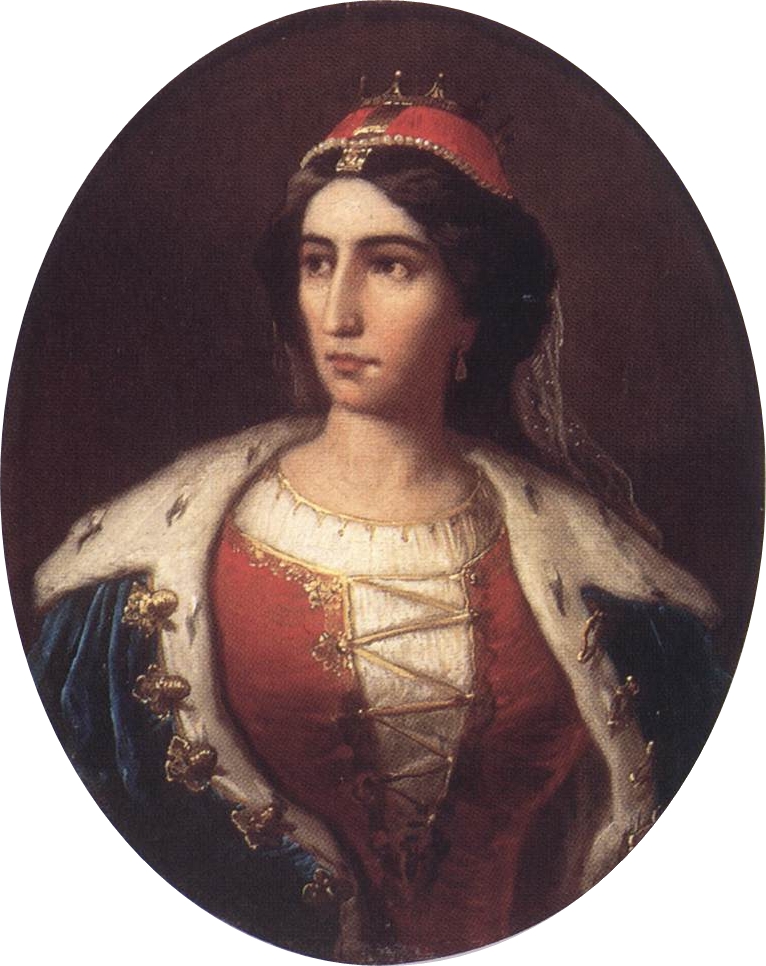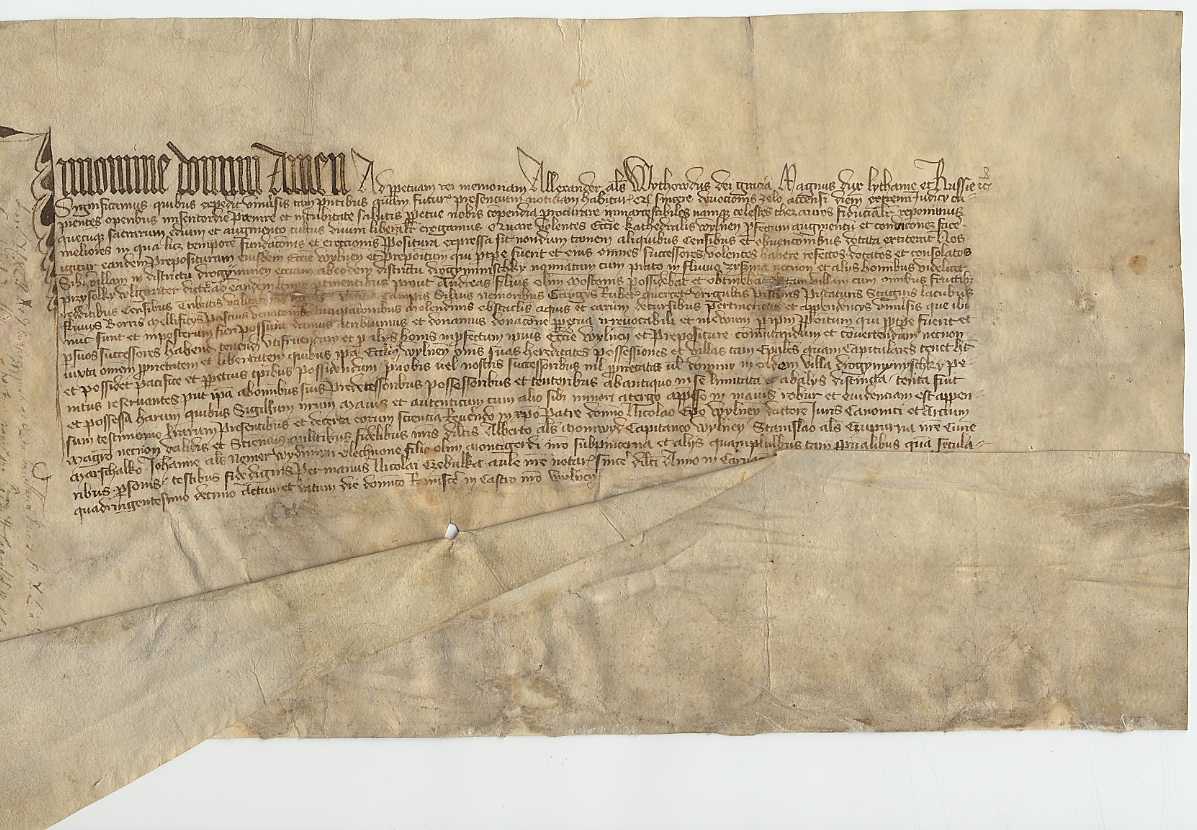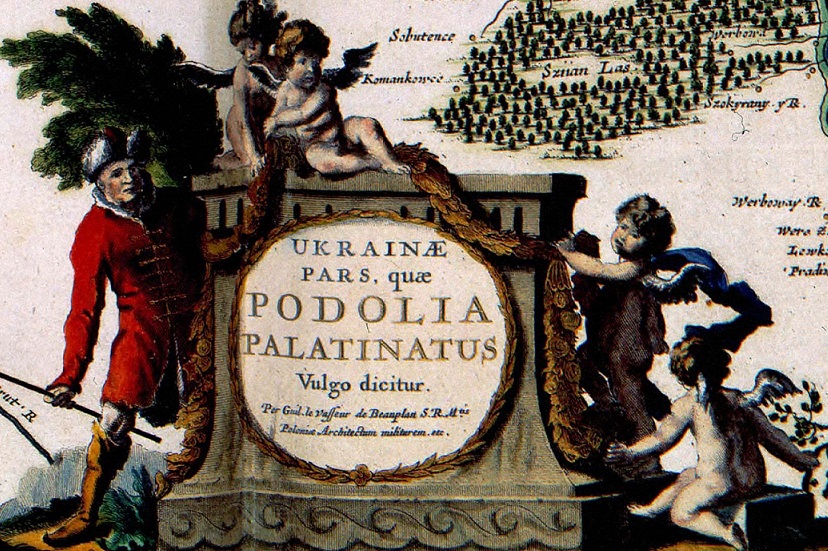|
Theodor, Prince Of Podolia
Theodor, Prince of Podolia (, , , died 1414 in Mukachevo) was a member of the Gediminids dynasty branch in what is now Ukraine. Son of Karijotas. Fedir inherited Navahrudak Castle from his father. After Grand Duchy of Lithuania gained Podolia as a result of the decisive victory against the Golden Horde at the Battle of Blue Waters in 1362, he with his three brothers were appointed by Grand Duke Algirdas to administrate the region. After the last of his brothers died circa 1389, he remained the sole administrator of Podolia for three years until his exile by the Grand Duke Vytautas the Great. In 1392 he disobeyed Vytautas the Great and was forced into exile. In 1396, Koriatovych purchased the city of Munkács in the Kingdom of Hungary (today Mukachevo, Ukraine), settling himself in the city's Palanok Castle, which would become one of the most protected castles in the region. References * * ''Шабульдо Ф. М.'Федір Коріятович// NASU Institute of History of ... [...More Info...] [...Related Items...] OR: [Wikipedia] [Google] [Baidu] |
Duchy Of Podolia
The Duchy of Podolia (, ; ) was a historical polity that emerged from the territory of the former Kingdom of Galicia–Volhynia. The principality was formed in the southwestern lands of the former kingdom during the 14th-century Galicia–Volhynia Wars, a conflict over its succession and territories involving the Kingdom of Poland, the Grand Duchy of Lithuania, and the Kingdom of Hungary. The Principality was established by the Koriatovych brothers (Lithuanian: Karijotaičiai), sons of Karijotas and members of the Lithuanian Gediminid dynasty. Prominent among the early rulers were Prince Yuriy Koriatovych and his brothers Oleksandr, Konstantin, and Fedir. They gained control over Podolia following the Lithuanian victory over the Golden Horde at the Battle of Blue Waters (), likely under the authority of their uncle, Grand Duke Algirdas of Lithuania. While some sources mention Yuriy and Oleksandr acknowledging Polish suzerainty under King Casimir III of Poland around 1366, their ... [...More Info...] [...Related Items...] OR: [Wikipedia] [Google] [Baidu] |
Battle Of Blue Waters
The Battle of Blue Waters was fought at some time in the autumn of 1362 or 1363 on the banks of the Syniukha River, a left tributary of the Southern Bug, between the armies of the Grand Duchy of Lithuania and the Golden Horde. The Lithuanians won a decisive victory and finalized their conquest of the Principality of Kiev. Background After the death of its ruler Berdi Beg Khan in 1359 the Golden Horde experienced a series of succession disputes and wars that lasted two decades (1359–81). The Horde began fracturing into separate districts (''ulus''). Taking advantage of internal disorder within the Horde, Grand Duke Algirdas of Lithuania organized a campaign into Tatar lands. He aimed to secure and expand southern territories of the Grand Duchy of Lithuania, particularly the Principality of Kiev. Kiev had already come under semi-Lithuanian control after the Battle on the Irpin River in early 1320s, but still paid tribute to the Horde. Battle In 1362 or 1363, Algirdas marched ... [...More Info...] [...Related Items...] OR: [Wikipedia] [Google] [Baidu] |
People From Mukachevo
The term "the people" refers to the public or Common people, common mass of people of a polity. As such it is a concept of human rights law, international law as well as constitutional law, particularly used for claims of popular sovereignty. In contrast, a people is any plurality of Person, persons considered as a whole. Used in politics and law, the term "a people" refers to the collective or community of an ethnic group or nation. Concepts Legal Chapter One, Article One of the Charter of the United Nations states that "peoples" have the right to self-determination. Though the mere status as peoples and the right to self-determination, as for example in the case of Declaration on the Rights of Indigenous Peoples, Indigenous peoples (''peoples'', as in all groups of indigenous people, not merely all indigenous persons as in ''indigenous people''), does not automatically provide for independence, independent sovereignty and therefore secession. Indeed, judge Ivor Jennings i ... [...More Info...] [...Related Items...] OR: [Wikipedia] [Google] [Baidu] |
1414 Deaths
Year 1414 ( MCDXIV) was a common year starting on Monday of the Julian calendar. Events January–March * January 7 – Michael Küchmeister von Sternberg becomes the 28th Grand Master of the Teutonic Order, succeeding Heinrich von Plauen. * January 9 – The Oldcastle Revolt, led by John Oldcastle as an uprising by the Lollards in England against King Henry V, begins at St. Giles' Fields. King Henry's troops, stationed at Clerkenwell Priory in London, halt the rebellion the next day and capture 80 rebels who are later convicted of and executed for treason. * February 11 – The coronation of Ferdinand I as King of Aragon takes place at Zaragoza. * February 26 – The speech given by French theologian Jean Petit of the "Council of Faith", including nine propositions drawn from the speech, is publicly burned by order of the inquisitor, Gerard de Montaigu, the Roman Catholic Bishop of Paris. * March 9 – Abu’l-Faḍl Abbas Al-Musta'in, pre ... [...More Info...] [...Related Items...] OR: [Wikipedia] [Google] [Baidu] |
Polski Słownik Biograficzny
''Polski Słownik Biograficzny'' (''PSB''; Polish Biographical Dictionary) is a Polish-language biographical dictionary, comprising an alphabetically arranged compilation of authoritative biographies of some 25,000 notable Poles and of foreigners who have been active in Poland – famous as well as less-well-known persons – from Popiel, Piast Kołodziej, and Mieszko I, at the dawn of Polish history, to persons who died in the year 2000. The ''Dictionary'', published incrementally since 1935, is a work in progress. It currently covers entries from A to S and its completion is expected about 2030. The PSB is, by its own assessment, "at present... one of the world's leading biographical publications." Outside Poland, it is available at the British Library, the Library of Congress, the Vatican Library, the Hoover Institution on War, Revolution and Peace, the University of California at Berkeley, Stanford University, the Getty Museum, and many other national and major research li ... [...More Info...] [...Related Items...] OR: [Wikipedia] [Google] [Baidu] |
NASU Institute Of History Of Ukraine
Institute of History of Ukraine is a research institute in Ukraine that is part of the National Academy of Sciences of Ukraine department of history, philosophy and law and studies a wide spectrum of problems in history of Ukraine. The institute is located in Kyiv. History The institute was established on the decision of the Central Committee of the Communist Party of Ukraine on July 23, 1936, and the Presidium of Academy of Sciences of the Ukrainian SSR on July 27, 1936, based on several departments and commission of the academy and the All-Ukrainian Association of Marx-Lenin Institutes (VUAMLIN). Original it was composed of three departments: history of Ukraine in feudalism epoch, history of Ukraine in epoch of capitalism and imperialism, and history of Ukraine in Soviet period. After the Soviet annexation of eastern Poland during the World War II, in Lviv, Western Ukraine was established a branch of the institute, which was headed by Ivan Krypiakevych. After the war in 1946, ... [...More Info...] [...Related Items...] OR: [Wikipedia] [Google] [Baidu] |
Palanok Castle
The Palanok Castle or Mukachevo Castle (; or ; ) is a historic castle in the city of Mukacheve in the western Ukrainian oblast An oblast ( or ) is a type of administrative division in Bulgaria and several post-Soviet states, including Belarus, Russia and Ukraine. Historically, it was used in the Russian Empire and the Soviet Union. The term ''oblast'' is often translated i ... (Administrative divisions of Ukraine, province) of Zakarpattia Oblast, Zakarpattia. The Palanok Castle is delicately preserved,myukraine.info — Mukachevsky "Palanok" Castle and is located on a former volcano, volcanic hill. The castle complex consists of three parts: the high, middle, and low castle. [...More Info...] [...Related Items...] OR: [Wikipedia] [Google] [Baidu] |
Vytautas The Great
Vytautas the Great (; 27 October 1430) was a ruler of the Grand Duchy of Lithuania. He was also the prince of Grodno (1370–1382), prince of Lutsk (1387–1389), and the postulated king of the Hussites. In modern Lithuania, Vytautas is revered as a national hero and was an important figure in the national rebirth in the 19th century. ''Vytautas'' is a popular male given name in Lithuania. In commemoration of the 500-year anniversary of his death, Vytautas Magnus University was named after him. Monuments in his honour were built in many towns in independent Lithuania during the interwar period from 1918 to 1939. Vytautas knew and spoke the Lithuanian language with his cousin Jogaila. Struggle for power 1377–1384 Vytautas' uncle Algirdas had been Grand Duke of Lithuania until his death in 1377. Algirdas and Vytautas' father Kęstutis had ruled jointly in the form of diarchy, with Algirdas governing the east and Kęstutis the west, primarily responsible for defense again ... [...More Info...] [...Related Items...] OR: [Wikipedia] [Google] [Baidu] |
Podolia
Podolia or Podillia is a historic region in Eastern Europe located in the west-central and southwestern parts of Ukraine and northeastern Moldova (i.e. northern Transnistria). Podolia is bordered by the Dniester River and Boh River. It features an elongated plateau and fertile agricultural land covering an area of . The two main rivers serve as important trade channels. Podolia is known for its cherries, mulberries, melons, gourds, and cucumbers. The region has a rich history, dating back to the Neolithic, with various tribes and civilizations occupying it over time. It became part of the Kingdom of Galicia–Volhynia, the Golden Horde, the Kingdom of Poland, the Grand Duchy of Lithuania, the Ottoman Empire, the Habsburg monarchy of Austria, and the Russian Empire. In the 20th century, Podolia underwent various political changes, with both the Second Polish Republic and the Soviet Union controlling parts of it at different times. Podolian culture is renowned for its folk icon-p ... [...More Info...] [...Related Items...] OR: [Wikipedia] [Google] [Baidu] |
Spytko II Of Melsztyn
Spytek of Melsztyn ( or ) was a Polish nobleman (szlachcic) of the Leliwa coat of arms. Spytek was owner of Melsztyn estates. He served as Marszalek, Court Marshal since 1373, voivode of Kraków Voivodeship (14th century – 1795), Kraków Voivodeship since 1381, starosta of Biecz since 1383 and Kraków since 1390. Continuing the idea of Władysław I Łokietek he initiated the marriage of Queen Jadwiga of Poland and Grand Duke of Lithuania – to become king of Poland – Władysław II Jagiełło. In 1391–1396 Spytek reclaimed the Land of Wieluń and Orzeszków from Prince Władysław Opolczyk. On 13 June 1395 the Władysław II Jagiełło, King gave Spytek a part of Podolia as fief, Jadwiga of Poland, Queen Jadwiga confirmed this on 10 July 1395. During the brief period when he was Duke of Podolia, he succeeded lead to the resignation Fyodor Koriatovych of the rights to Podolia and with Queen and King negotiated with Sigismund, Holy Roman Emperor, Sigismund of Luxembourg (th ... [...More Info...] [...Related Items...] OR: [Wikipedia] [Google] [Baidu] |
Navahrudak Castle
The former castle in Navahrudak, Belarus (, , ) was one of the strongholds of the Grand Duchy of Lithuania, cited by Maciej Stryjkowski as the location of Mindaugas's coronation as King of Lithuania as well as his likely burial place.Tomas Baranauskas. On the opinion of Lithuanian historians (Tomas Baranauskas, T.Baranauskas etc.), there is no information that King Mindaugas lived or visited Navahrudak at all - it is Maciej Stryjkowski, Maciej Stryjkowski's 16th century written conjecture in the interpretation of legends. As early as the 14th century, Navahrudak is known to have possessed a stone tower along the lines of Tower of Kamyanyets. Other ... [...More Info...] [...Related Items...] OR: [Wikipedia] [Google] [Baidu] |




